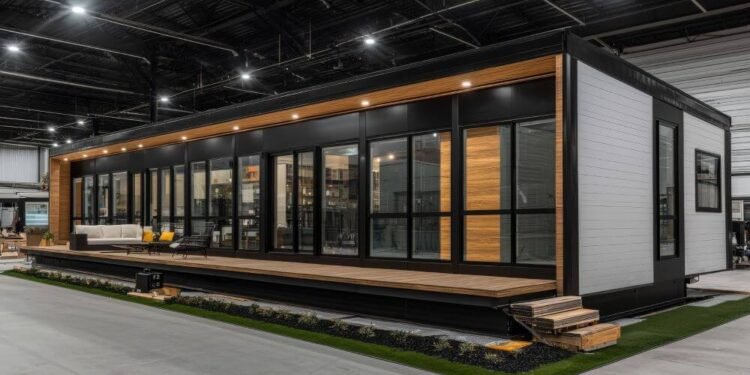In today’s industrial landscape, businesses increasingly adopt modular engineering solutions to enhance efficiency, reduce costs, and improve scalability. Traditional construction and manufacturing methods typically involve lengthy timelines, high expenses, and rigid structures that struggle to adapt to changing demands. In contrast, modular engineering offers a streamlined, flexible approach that aligns with modern business needs.
Read on to learn why businesses are shifting to modular engineering solutions.
The Rise of Modular Engineering
Modular engineering is a forward-thinking approach that relies on standardized, factory-built components designed for quick assembly, disassembly, and reconfiguration. This method transforms industries, from construction to automotive manufacturing, by reducing material waste, speeding up project completion, and allowing for greater customization.
A key example is investing in pre-engineered building solutions, which offer versatile, high-quality structures for warehouses, offices, and emergency facilities. By streamlining processes and enhancing adaptability, modular engineering meets the demands of modern businesses for efficiency and scalability.
Reasons Businesses Shift to Modular Engineering
Companies across industries are rapidly adopting modular engineering solutions to overcome traditional limitations. This shift is driven by compelling advantages, such as:
Cost Efficiency and Budget Control
One of the primary drivers behind the shift to modular solutions is cost efficiency. Traditional construction projects typically face budget overruns due to unforeseen delays, material shortages, and labor inefficiencies. Modular engineering can mitigate these risks by relying on factory-controlled production, where components are manufactured in bulk under strict quality standards. This can reduce material waste and labor expenses while ensuring consistent output.
Also, modular engineering can provide businesses with cost certainty, as expenses are locked in during the initial design phase, minimizing budget overruns. The prefabricated nature of components allows structures to be easily disassembled, relocated, or repurposed, extending their lifecycle and maximizing ROI.
Speed and Time-to-Market Advantages
Time is critical to business success, and modular engineering can significantly reduce project timelines. Since components are prefabricated off-site, on-site assembly is faster and less susceptible to weather-related delays. Modular solutions can offer unmatched speed for industries requiring rapid deployment, such as disaster relief, military operations, or temporary commercial spaces.
Traditional construction often faces delays from weather, labor shortages, and complex permitting, stretching timelines to years. In contrast, pre-engineered buildings can arrive as precision-fabricated kits, enabling assembly in weeks. This rapid deployment can help businesses establish facilities for urgent projects, seasonal demand surges, or disaster recovery. This can minimize downtime while securing faster revenue generation and competitive advantage in dynamic markets.
Flexibility and Scalability
Business needs evolve, and modular engineering can provide the flexibility to adapt without extensive rework. Unlike conventional structures, modular systems can be easily expanded, reconfigured, or relocated as requirements change. This scalability is particularly valuable for growing enterprises, seasonal operations, and industries with fluctuating demands.
Additionally, modular systems can revolutionize manufacturing with reconfigurable production lines that adapt instantly to new products or higher volumes. In construction, prefabricated modular spaces allow painless expansion, adding offices or warehouse space without costly downtime. This plug-and-play flexibility can keep operations agile, future-proofing businesses against market shifts while maintaining uninterrupted productivity.
Sustainability and Environmental Benefits
Sustainability is a growing business priority, and modular engineering aligns with eco-friendly practices. The precision of factory production can reduce material waste, while the ability to disassemble and reuse components can minimize environmental impact. Many modular solutions also incorporate energy-efficient designs, such as improved insulation and renewable energy integration.
On the other hand, modular construction’s precision manufacturing cuts onsite waste while projects finish approximately 30-50% faster, dramatically reducing emissions from equipment and transportation. For CSR-driven organizations, this can deliver quantifiable sustainability benefits, achieving LEED certification standards while meeting aggressive operational timelines, proving environmental responsibility and business efficiency aren’t mutually exclusive goals.
Quality and Consistency
Factory-controlled modular production can enforce strict quality standards through automated precision engineering and repeatable processes. Each component undergoes multiple inspection checkpoints, from material selection to final assembly, ensuring structural integrity and performance consistency unmatched by traditional onsite construction. This can result in buildings with tighter tolerances, fewer callbacks, and proven longevity across climate conditions.
Alright, so to achieve that level of reliability, many manufacturers also turn to metal plating services during production. Just think about it like this: applying protective coatings like nickel or zinc adds an extra layer of strength and corrosion resistance, keeping parts performing at their best for years. It should be the bare minimum, but you’d be surprised that it’s not (well, for the most part). But it’s pretty much one of those behind-the-scenes steps that makes modular systems tougher, longer-lasting, and more dependable overall (especially when needing to handle the harsh elements outside).
For regulated sectors, modular engineering can deliver certified components meeting exacting industry standards through documented manufacturing protocols. Pharmaceutical cleanrooms, aerospace test facilities, and hospital units achieve compliance faster with traceable, validated systems. Standardized modules can also streamline recertification and technology retrofits, maintaining continuous operational compliance over decades.
Technological Integration
Cutting-edge building information modeling (BIM) software and automated fabrication systems now allow millimeter-perfect modular component design, with clash detection and performance modeling completed virtually before production. This digital thread can synchronize architects, engineers, and builders in real time, eliminating costly field errors while enabling complex prefabricated assemblies that push architectural boundaries previously impossible with conventional methods.
Furthermore, next-gen smart modules embed wireless sensors monitoring strain, temperature and energy flows 24/7, feeding AI-powered analytics platforms. This can enable predictive maintenance alerts before failures occur, automated energy optimization, and digital twin synchronization, transforming static structures into responsive assets that continuously improve performance while slashing lifecycle operational costs through data-driven management.
Conclusion
The shift toward modular engineering solutions reflects a broader trend in business optimization, prioritizing efficiency, adaptability, and sustainability. As businesses seek innovative ways to streamline operations, modular engineering will remain a cornerstone of modern industrial and commercial development.
By keeping the information mentioned above in mind, companies can future-proof their infrastructure, respond swiftly to market changes, and achieve long-term growth in an increasingly dynamic economy.






